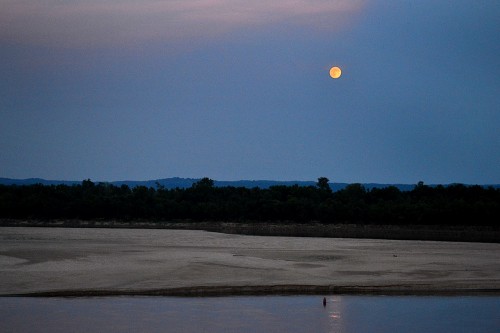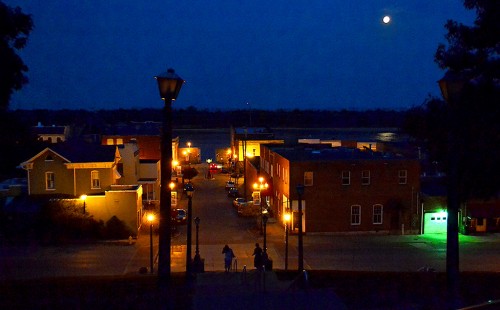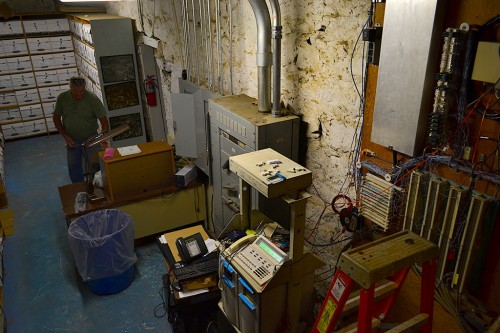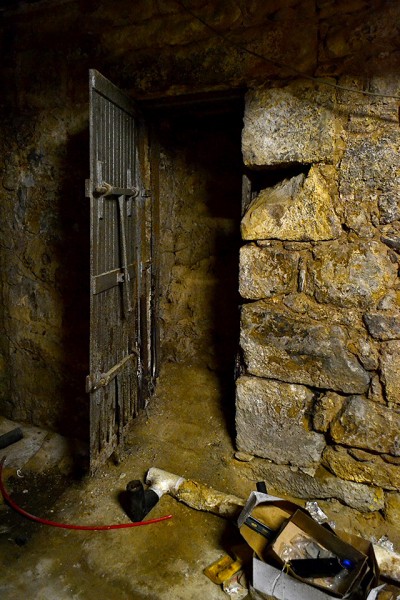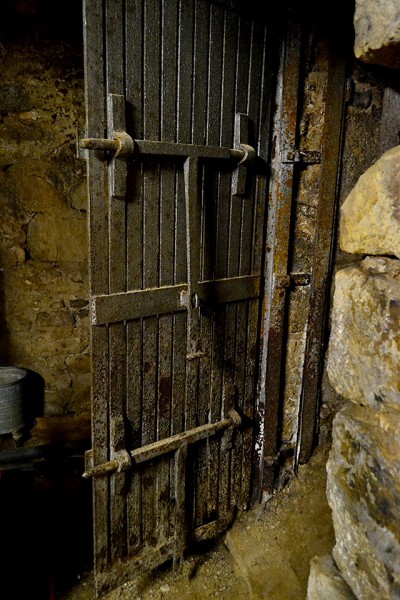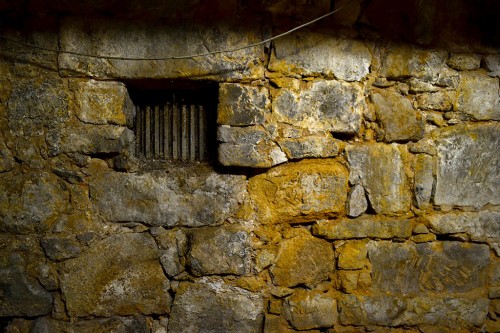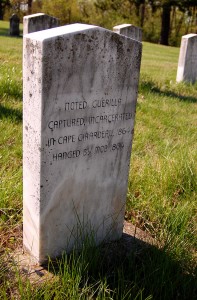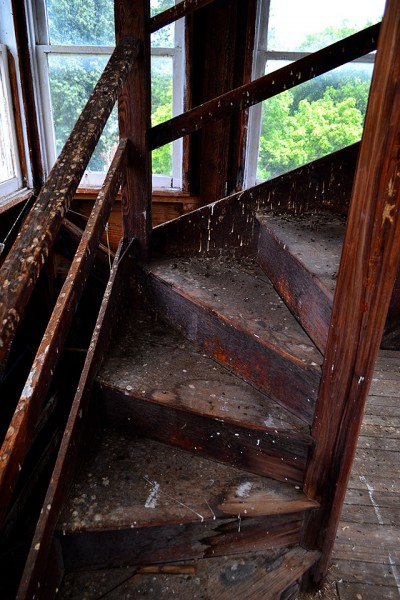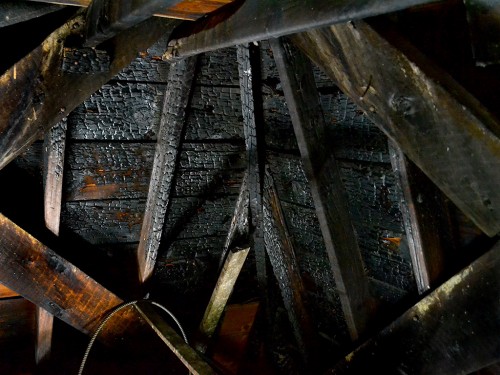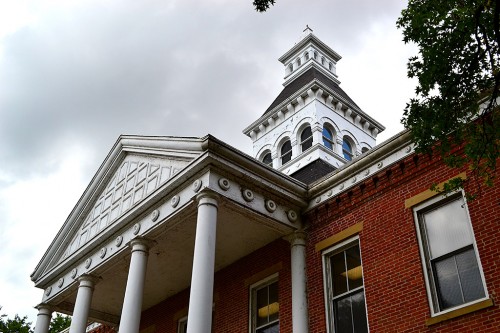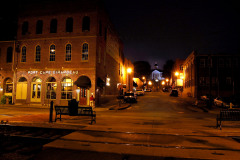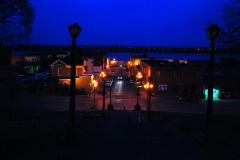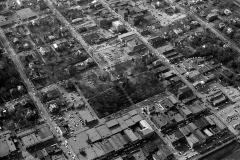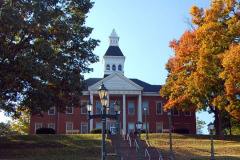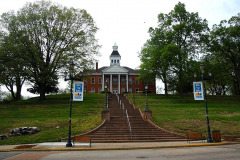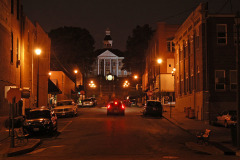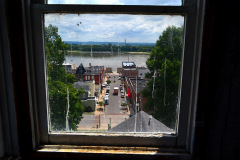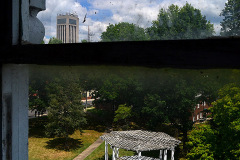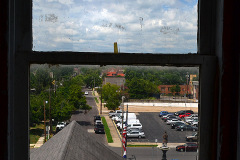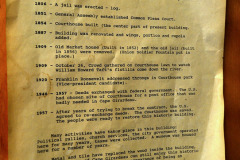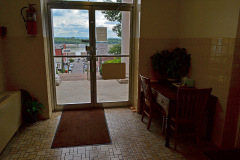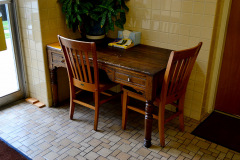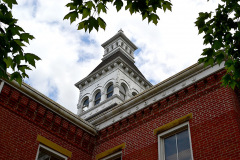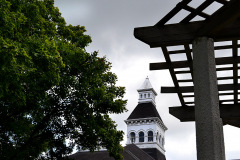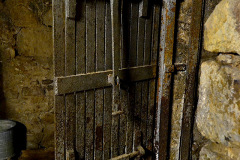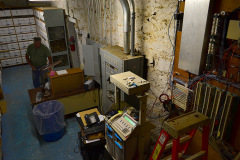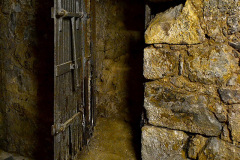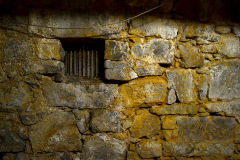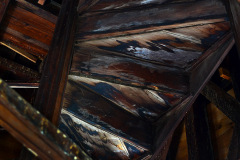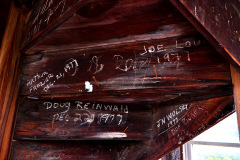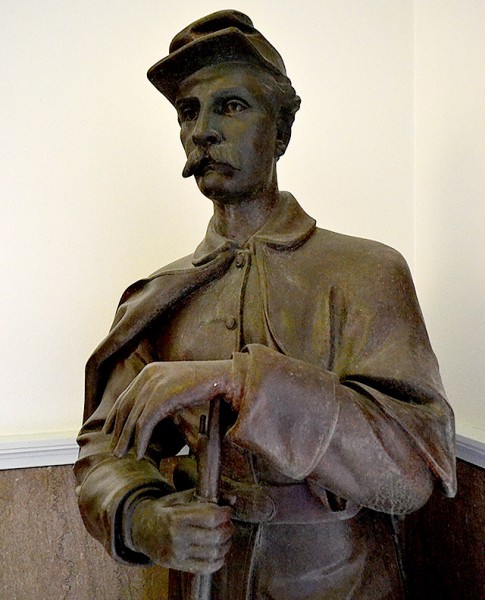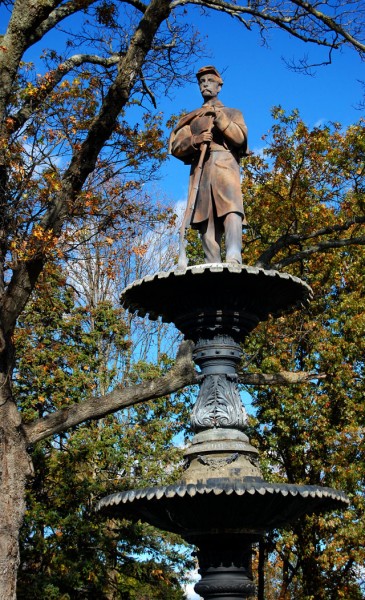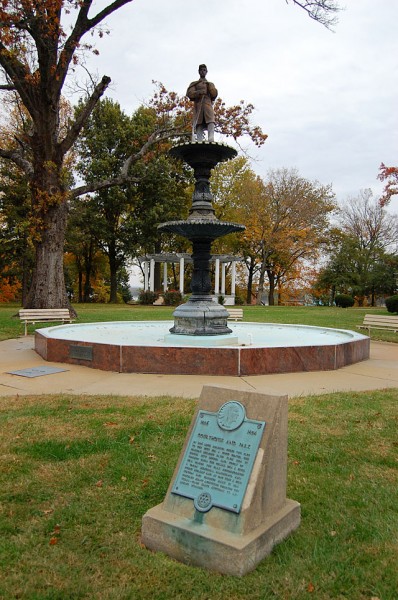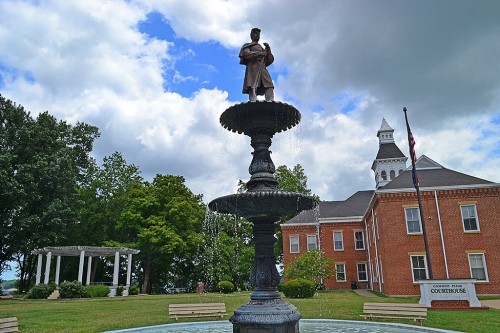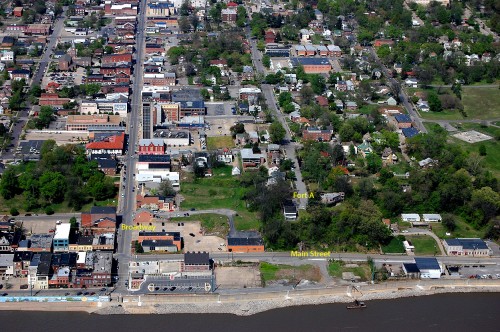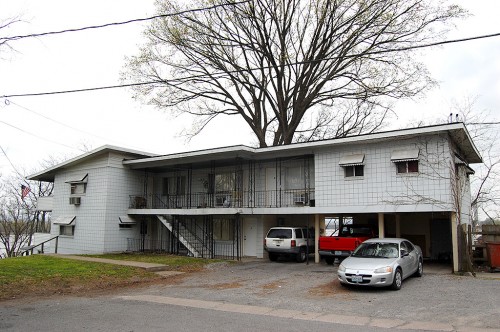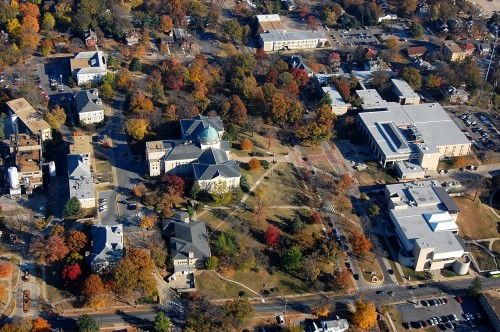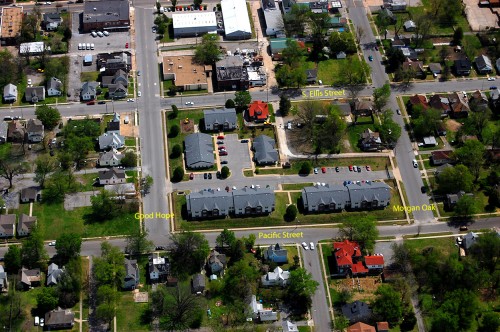When you’re shooting your second full moon of a visit, it’s probably time to start packing your bags. The moon phase ap on my Droid showed that the orb was 97% full last night, so I told Mother we better be ready to saddle up to shoot it tonight.
We pulled in to the parking lot at the base of Cape Rock to find eight or ten cars getting ready for the free entertainment. Just about that time, a long, long, long southbound freight rolled by in front of us. It kept coming and coming and coming, slowing all the time. Finally, with the last three empty hopper cars and a pusher engine blocking our view, it stopped. Dead, put-a-penny-on-the-tracks stopped.
We decided to go to the top of Cape Rock, but feared that it would be parked solid. To our surprise, there was only one car parked there, and it moved on, leaving us some prime real estate to watch.
 While I was setting up my tripod, a guy on a bike rolled up. We did all the ritual chicken dances that people with similar interests do and got so involved that I didn’t pay much attention to the horizon. I’d look over my shoulder from time to time and think, “Nope, not yet.”
While I was setting up my tripod, a guy on a bike rolled up. We did all the ritual chicken dances that people with similar interests do and got so involved that I didn’t pay much attention to the horizon. I’d look over my shoulder from time to time and think, “Nope, not yet.”
Well, I had misjudged where the thing was going to come up. On one of my shoulder checks, I looked a little more to the south and did one of those, “Whoa! Where did THAT come from?” Of course, I pretended that I had been patiently WAITING for the moon to get 10 degrees out of the water before shooting.
I shot a few frames with the longer lens on my video camera, but I like this one better because it shows how low the river is now. That’s one BIG sandbox down there. The river’s about three feet lower than it was when I shot the little picture above from Cape Rock last fall.
Checked out the casino
When some clouds covered the moon, we headed toward town. I thought maybe there would be some night working going on at the casino, but it didn’t look interesting. I opted not to try for a moon shot from the floodwall and the bridge because I had done those before. I decided to see what the view was like from the Common Pleas Courthouse.
When I came around the corner, the two women going down the steps were standing shoulder to shoulder trying to get a moon photo with their camera phones. I didn’t have the heart to tell them that the puny little flashes built into those cameras weren’t going to do much good at lighting up downtown OR the moon. I didn’t do much better. It was already pretty small in the sky by now.
This view down Themis Street is pretty similar to the one I shot in March of 2010.
I may try this angle for my next full moon shot, but it had better not be taken on THIS trip..

